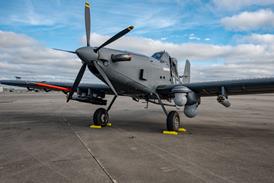The Orient Airlines Association (OAA) expects RPKs to continue to grow at around 10 per cent, while capacity cutbacks in 1994 should work through to produce higher load factors and an improvement in yields. Operating profits at the southeast Asian majors should reflect these improvements, but the optimism is tempered with caution. 'Above all, it must not be forgotten that in spite of a cutback in aircraft orders, the Asia-Pacific carriers are embarking on a major re-equipment programme in 1995-6, with the delivery of the A340, A330 and B777,' warns the OAA's director general Richard Stirland. These programmes require huge capital expenditure and there is some doubt that yield improvement will be enough to cover the proposed outlay. One major factor to watch for is good growth in outbound traffic from Japan, resulting from a strong yen and increasing confidence.
Meanwhile, China's emerging airline industry, which will play a critical role in regional travel markets, will continue to suffer growing pains. Only three of the country's nine main carriers are operating profitably and, while there remains no doubt China will become a thriving market, the trend underscores the growing belief it will take many years to mature.
The number of non-equity alliances between Asian operators and US and European airlines should also grow. A shift in Japanese policy, embracing international links and epitomised by the initial agreement between Japan Airlines and American Airlines, should ensure this country is a focal point for alliance building. A partnership between All Nippon Airways and British Airways is a strong possibility.
Increasing moves towards regional cooperation, such as the pilot multilateral aviation pact between Indonesia, Malaysia and Thailand, are very much in their infancy and unlikely to have an impact for some years.
Privatisation or partial sales of government holdings will also be high on the agenda. Despite some uncertainty over the timing, Qantas should move fully into the private sector this year, while the future structure of several other regional carriers should become clearer, including Garuda, Philippine Airlines, Air India and Indian Airlines.
Events at the two Indian state carriers will provide a yardstick with which to measure the government's commitment to liberalisation. A lowering of the extortionate fuel tax applied to private operators last year was a step in the right direction. But the best measure of the prospect of an open domestic market could be the start-up of the proposed Singapore Airlines-Tata joint venture scheduled for the end of 1995.
Bilateral relations with the US will continue to be a major issue for Asian nations, particularly Japan, and strong attempts will be made to revise long-standing air service agreements with Washington, still perceived by most Asian airlines to be unbalanced. The OAA will play a more vigorous role as airlines recognise the advantage of combined action.
Source: Airline Business























